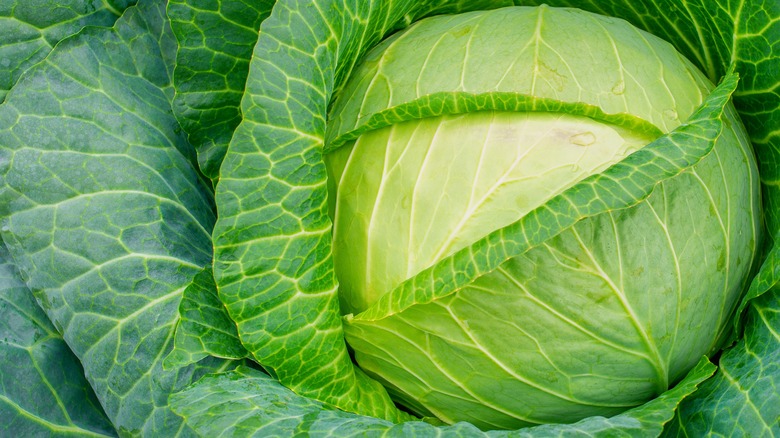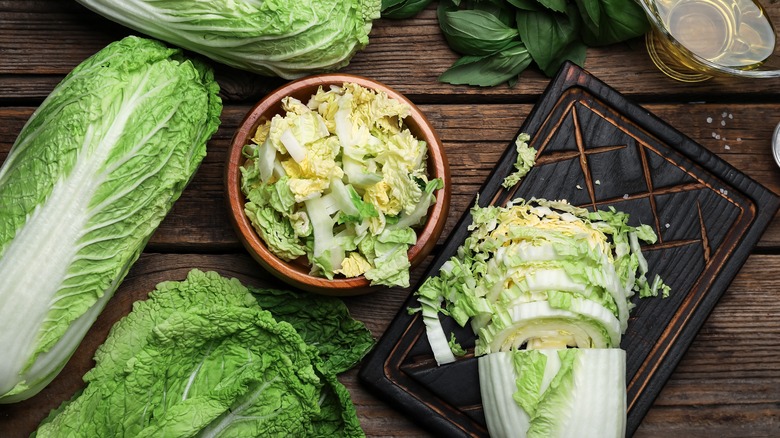The Difference Between Napa Cabbage And Green Cabbage
What may seem like the underdog in the vegetable world, cabbage doesn't get the love it truly deserves with its challenging nature to cook and treatment as a bland vegetable. However, the reality is far different as anyone who loves coleslaw or kimchi can tell you: With proper preparation, cabbage makes an excellent base for various delightful meals.
It is relatively inexpensive, packed with nutrients, and, as AllRecipes notes, is known for its long shelf life, lasting several months in storage under the right conditions. Keep it in the fridge, and its crisp texture and light flavor will become a year-round staple of your cooking or canning projects.
While many of the cabbage varieties you know will treat you right, each has different properties that make them better for certain uses. Green and red cabbage are the most similar, with red having a slightly "deeper and earthier" flavor, according to The Kitchn, and both will work well in the same dishes.
Beyond that, things get a little more nuanced, with other ones like Savoy and Napa cabbage somewhere between leafy greens and their relatives. As for Napa, what actually sets it apart from the green kind?
Napa cabbage has a more tender texture and sweeter flavor than green cabbage
Green cabbage may be the more "basic" option on the list, but that quality makes it incredibly versatile. Bon Appétit notes that it works in almost any cooking situation, from braising to grilling. Its defining feature is its sturdy and thick texture, retaining its crunch even after being preserved or slathered in mayonnaise.
Green cabbage has a slightly peppery taste when raw and tends to get sweeter as you cook it (via The Kitchn). Beyond coleslaw and sauerkraut, try using it in places where other greens would wilt too much, like in an old-fashioned cabbage soup.
Napa cabbage is a variety of Chinese cabbage, and according to Taste of Home, it's a relative of bok choy. It has a more tender bite than green cabbage, with a slightly sweeter flavor when raw. It also has thinner leaves that are not as tightly packed in their more oblong shape.
With its taste and texture in mind, you are far more likely to use it as part of a salad, eat it raw as a snack, or make a batch of sweet and sour pickled kimchi (via MasterClass). But similar to green cabbage, you can still cook with it — add it to soup for elevated crunch and flavor. Or sauté it up in a stir-fry with noodles or rice.
Differences aside, you can't go wrong with either type of cabbage if you're looking for a healthy side dish or nutrient-filled ingredient to enhance your meals.

